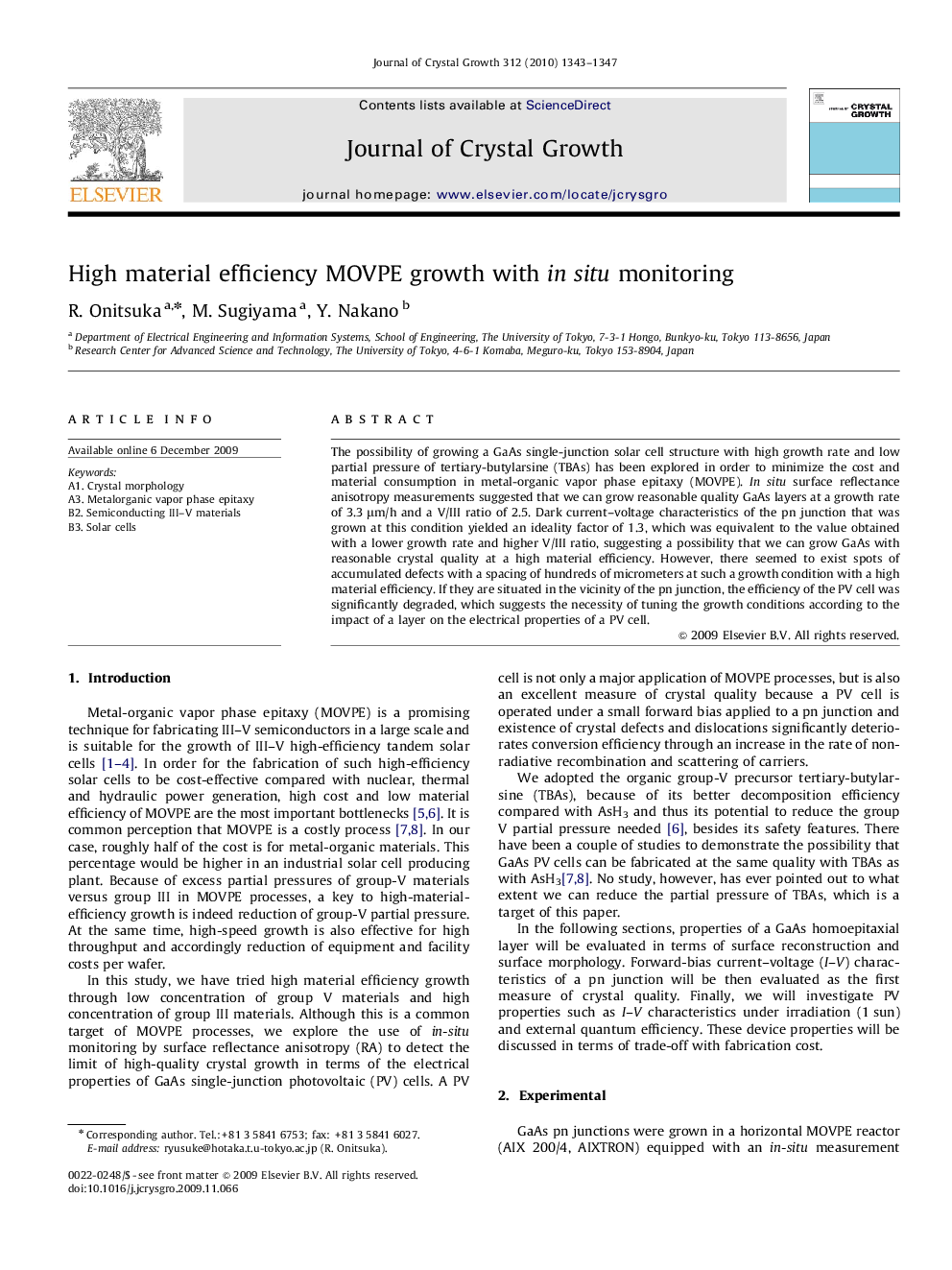| Article ID | Journal | Published Year | Pages | File Type |
|---|---|---|---|---|
| 1793504 | Journal of Crystal Growth | 2010 | 5 Pages |
The possibility of growing a GaAs single-junction solar cell structure with high growth rate and low partial pressure of tertiary-butylarsine (TBAs) has been explored in order to minimize the cost and material consumption in metal-organic vapor phase epitaxy (MOVPE). In situ surface reflectance anisotropy measurements suggested that we can grow reasonable quality GaAs layers at a growth rate of 3.3 μm/h and a V/III ratio of 2.5. Dark current–voltage characteristics of the pn junction that was grown at this condition yielded an ideality factor of 1.3, which was equivalent to the value obtained with a lower growth rate and higher V/III ratio, suggesting a possibility that we can grow GaAs with reasonable crystal quality at a high material efficiency. However, there seemed to exist spots of accumulated defects with a spacing of hundreds of micrometers at such a growth condition with a high material efficiency. If they are situated in the vicinity of the pn junction, the efficiency of the PV cell was significantly degraded, which suggests the necessity of tuning the growth conditions according to the impact of a layer on the electrical properties of a PV cell.
